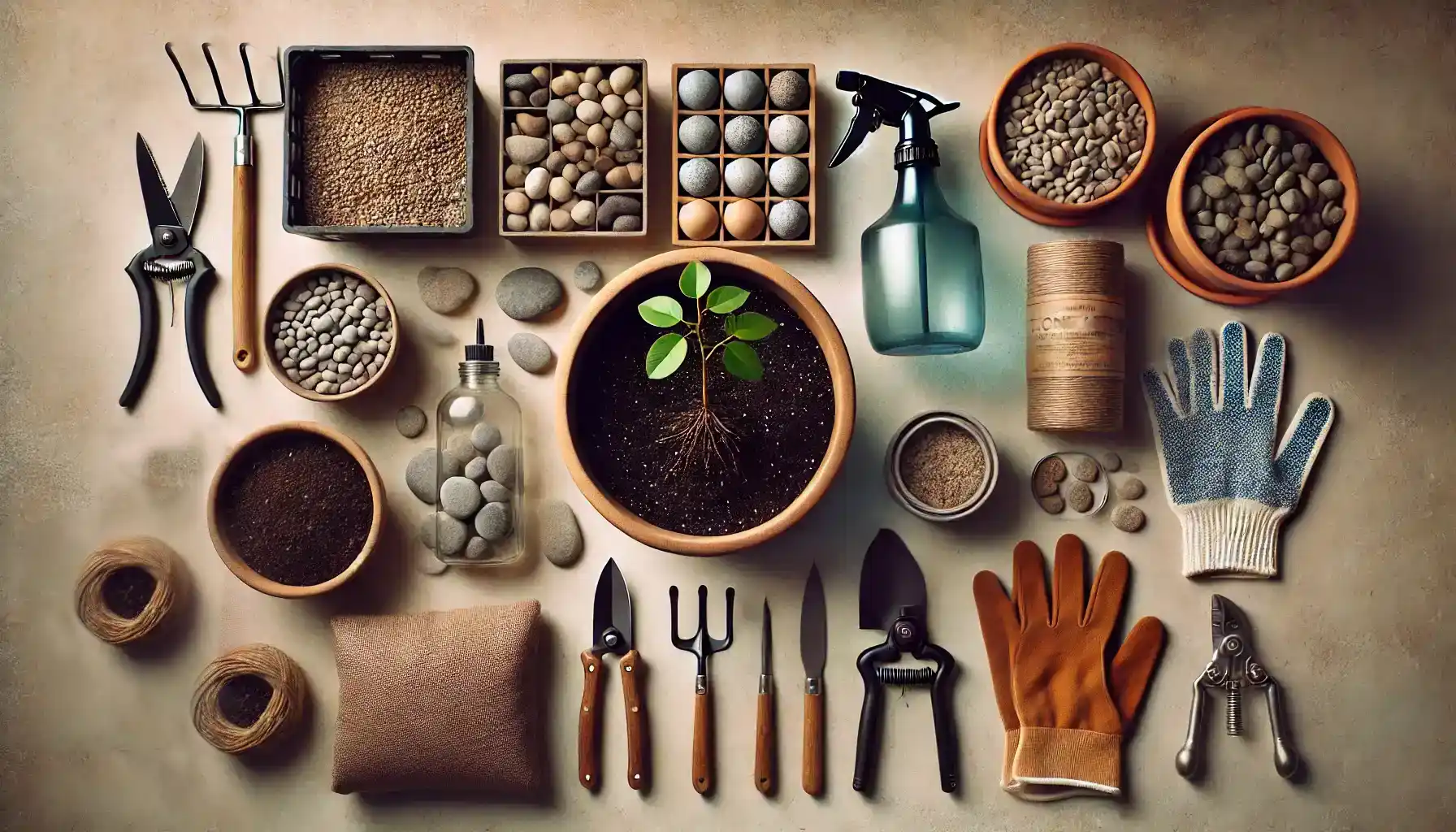
Learn about the signs indicating it is time to repot a Money Tree and the essential supplies you need to do so. Follow our step-by-step guide for a successful repotting process. Discover how AI Plant Finder can be your ultimate assistant in caring for your repotted Money Tree, ensuring it flourishes for years to come.
Contents:
The world of flora is delightful. Since ancient times, plants have been regarded as symbols of real-life concepts or something that people craved, e.g., prosperity, love, balance, affection, and so on. Many cultures still promote beliefs that a Money Tree may bring its owners some wealth and good luck. This has inevitably led to the ubiquity of this plant all over the globe and its ongoing popularity.
A Money Tree, just like other plants, has its own needs to be met and, thus, requires special attention to the conditions around it. Let us today explore when to repot Money Trees, what they need to remain healthy and pleasing to the eye, and which steps one should go through to successfully repot a plant into its new home.

What is a Money Tree?
Money Trees (or Pachira aquatica) are socially phenomenal, for they have always been popular thanks to their symbolic significance as prosperity attractors and unique appearance. To state it briefly, Money Trees feature a braided trunk topped with glossy, palmate leaves that resemble a hand. When put into indoor conditions, they usually grow six to eight feet tall, while their wild relatives may reach 60 feet in total.
Nevertheless, those who are lucky to own such a plant in their indoor garden should know the common needs of Money Trees and never forget about the repotting. With proper care and attention, these resilient plants can thrive for years and bring joy to the space around.
Money Tree: When To Repot the Plant?
“When should I repot my Money Tree?” This might be the first question when plant enthusiasts understand the importance of repotting these plants and promoting their health via such a tricky procedure. First, repotting should be done every 2-3 years, and the most appropriate season is spring or early summer. During this period, Money Trees are waking up from the seasonal sleep and are ready to grow and thrive with renewed vigor.
Repotting during this time allows the plant to recover quickly and establish itself in its new environment before the onset of winter dormancy. However, if your Money Tree exhibits signs of distress, root bound, pest infestations, or stunted growth at any time of the year, do not postpone this procedure but repot it to prevent further complications.
Do Money Trees like to be root-bound or damaged? Surely, these are not the best conditions for the plant. This is why one should closely observe a tree to protect its health in advance.
Supplies to Prepare Before Repotting
If you have finally decided to repot a Money Tree, make sure you have all the necessary supplies to make it a smooth and successful process. Here is the list of the items you will definitely need for repotting:
The new pot that is slightly larger than the current one with drainage holes at the bottom.
High-quality potting mix suitable for indoor plants. Many gardeners recommend a mix of coco fiber, charcoal, and organic compost (other mixes are also possible).
Pebbles, clay pellets, or gravel.
Trowel or garden spade.
Gloves.
Watering can or spray bottle.
Pruning shears.
Protecting covering for the space where repotting is to be held.

Repotting the Money Tree: Step-by-Step Guide
At first, repotting your Money Tree may seem exhausting, but with the right approach and thorough preparation, it can become a rewarding and righteous experience. Let us explore the most common method of repotting the plant to ensure the success of this gardening process.
Step 1: Prepare the new pot and a potting mix. Make sure everything is clean, and a pot has enough drainage holes at the bottom to prevent waterlogging. Put a layer of pebble, gravel, or the like and cover it with the fresh potting mix, filling it to about one-third full.
Step 2: Loosen the roots. Take the Money Tree out of its old pot by tipping it on its side and carefully sliding the plant out. If the roots are tightly packed, use your fingers or a small tool to gently loosen them from the soil.
Step 3: Inspect the roots. Take this opportunity to inspect the roots of your Money Tree for any signs of damage or disease. Trim the root ball to get rid of the damaged or diseased roots with the use of sterilized pruning shears to promote healthy growth.
Step 4: Put the Money Tree into a new pot. Carefully place the Money Tree in the center of the pot and ensure that the top of the root ball is the same level as the rim of the pot.
Step 5: Fill in with potting mix. As you add more potting mix to the pot, check if the roots are covered. Do not forget to leave about an inch of space between the top of the soil and the pot's rim.

Step 6: Finish with watering session. As soon as the Money Tree is repotted, give your Money Tree a thorough watering to help settle the soil and hydrate the roots. Allow any excess water to drain out through the bottom of the pot before placing the plant in its desired location.
Step 7: Monitor and care. Place the repotted Money Tree in a location with bright, indirect light and continue to monitor its progress in the coming weeks. Avoid overwatering and keep an eye out for any signs of stress or transplant shock.
Caring for the Repotted Money Tree Is Easier Than You Think
After the repotting process, anyone, who has been involved, including a plant and a gardener, needs some rest. However, the first days after repotting require thorough attention and special care for the tree. To make sure you are doing right, we recommend that you turn to the plant assistant that can smoothly guide you through this process and offer more than peace of mind.
The industry is full of comprehensive solutions, but AI Plant Finder, a new yet promising application for plant and disease identification is beyond common planting software. What AI Plant Finder offers is the immediate plant and disease ID with just one photo, your garden collection, a plant encyclopedia with expert tips and professional opinions on care needs, the water calculator, the light meter, and care reminders.

Watering sessions, profound fertilization, and lighting conditions are essential for a newly repotted plant. With AI Plant Finder, one can easily set up reminders to take care of the Money Tree on time. Try this amazing application now and start your planting journey with a personal assistant by your side.